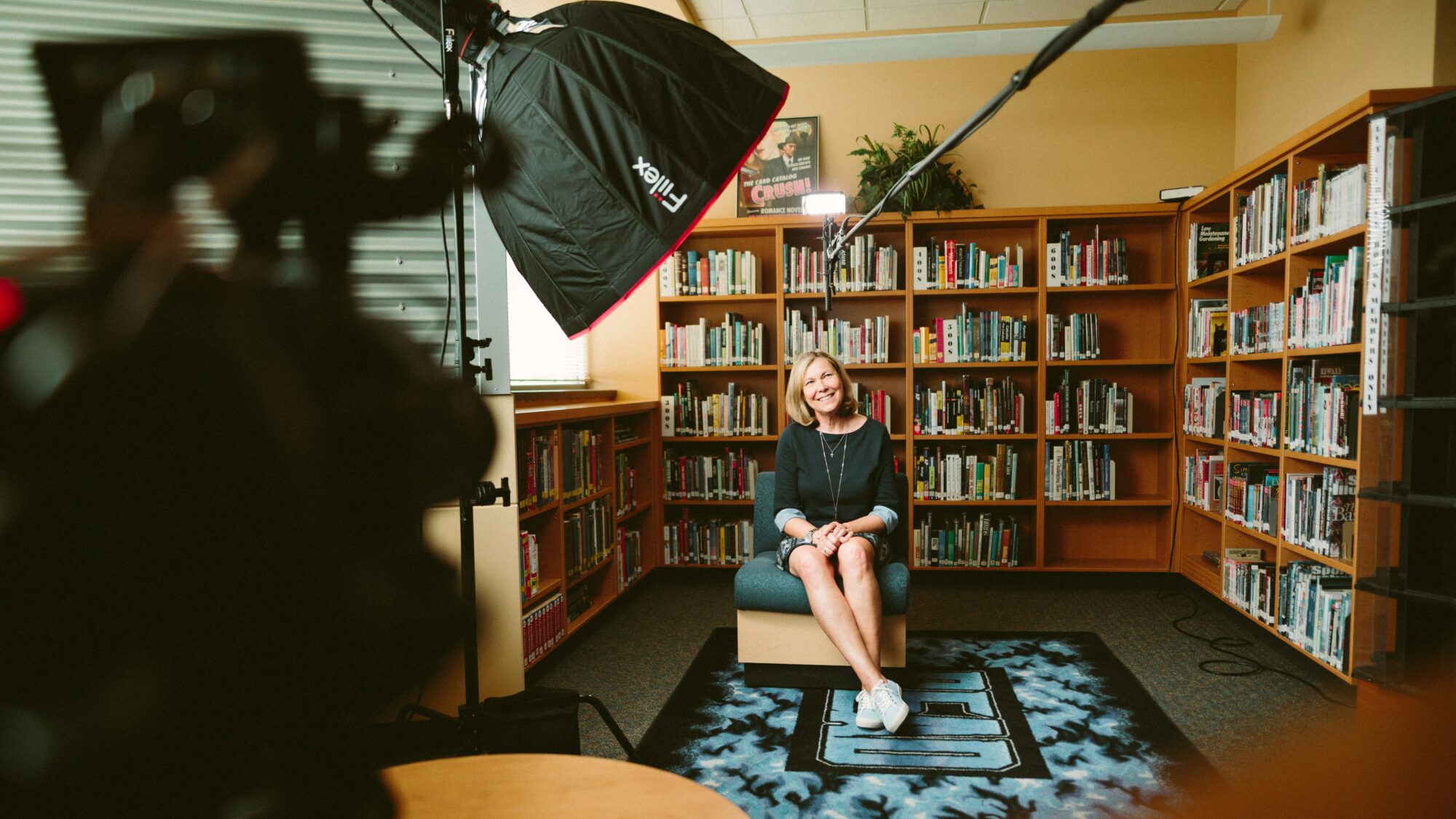Let’s Get Personal
Hero Image by Sam McGhee, Featured image by Panuwat Dangsungnoen on Vecteezy
Nonprofit communicators face a daunting challenge. You’re tasked with conveying the full scope and importance of your programs, often with limited audience attention. It’s a delicate balance between highlighting numbers, funds distributed, and complex impact studies. The sheer volume of information can be overwhelming, not just for you, but for your audience as well.
When you’re immersed in a program daily, it’s easy to lose perspective on how little time your audience has to grasp its significance. You understand the intricate details and the grand scale of your work. It’s all critical and impressive to you. But your audience doesn’t share this intimate knowledge, and they may struggle to connect with your message if it’s not anchored in something more relatable.
This disconnect between your deep understanding and your audience’s limited exposure creates a communication gap. How do you bridge this divide and make your program’s impact resonate on a personal level? The answer lies in the power of individual stories. These narratives have the unique ability to captivate audiences in ways that statistics and broad overviews simply can’t match.
The Power of Personal Narratives
When it comes to communicating program impact, personal narratives reign supreme. why are personal accounts so compelling?
The answer lies in our inherent social nature. As humans, we’re wired to pay attention to other people. This bias towards personal stories isn’t just anecdotal; it’s backed by science. Studies show that even infants display a marked preference for human faces over other stimuli, highlighting our innate inclination towards social connection.
This predisposition makes personal narratives incredibly potent tools for nonprofit communicators. When you share the story of an individual whose life has been transformed by your program, you’re not just presenting information – you’re tapping into your audience’s empathy and emotional core.
Why Personal Stories Stick
Personal accounts possess a unique stickiness in our memory. While we might struggle to recall exact figures or complex impact studies, we’re far more likely to remember the story of Sarah, whose life was changed by a job training program, or Michael, who found hope through a community outreach initiative.
These narratives do more than just entertain; they serve as emotional anchors, giving abstract concepts and statistics a tangible, relatable form. They transform your program from a series of activities and outcomes into a vivid, human experience that resonates long after the initial encounter.
By leveraging the power of personal stories, you’re not just informing your audience – you’re inviting them to connect with your mission on a deeper, more meaningful level. This connection is what turns passive listeners into engaged supporters, ready to champion your cause.
Stakeholder Testimonials: Bringing Impact to Life
Now that we’ve established the power of personal narratives, let’s dive into a potent tool for showcasing your program’s impact: stakeholder testimonials. These firsthand accounts serve as bridges, connecting your program’s goals to tangible, real-world outcomes.
Stakeholder testimonials are more than just feel-good stories; they’re genuine voices that lend credibility to your message. When a beneficiary shares how your program transformed their life, it resonates far more deeply than any statistic or report ever could. These personal accounts put a face to your impact, making it relatable and memorable.
Selecting Impactful Testimonials
The key to effective testimonials lies in careful selection. Look for stories that:
-
-
- Clearly demonstrate the before-and-after impact of your program
- Reflect the diversity of the communities you serve
- Align with your organization’s mission and values
- Offer specific, tangible examples of positive change
-
Remember, the most powerful testimonials aren’t necessarily the most dramatic. Sometimes, it’s the everyday transformations that resonate most with your audience. A technology that helps researchers detect illegal fishing, a student who spoke out against his school administration’s discriminatory behavior, or a community that came together through a racial healing circle – these stories showcase the real-life impact of your work.
By harnessing the power of stakeholder testimonials, you’re not just telling your program’s story; you’re letting those who’ve experienced its impact speak for themselves. This authenticity can be the key to unlocking your audience’s enthusiasm, turning passive observers into passionate supporters of your cause.
Video: The Ultimate Medium for Storytelling
While personal stories can be shared through various mediums, video stands out as the most powerful tool in your communication arsenal. Why? Because it engages both the eyes and ears simultaneously, creating a more immersive and memorable experience for your audience.
Unlike blog articles or podcasts, videos have a unique ability to capture and hold attention. They’re more likely to be watched and shared, extending the reach of your message. Think about it: when was the last time you scrolled past a compelling video without at least pausing to take a look?
Versatility in Video Formats
The beauty of video lies in its versatility. You’re not limited to a single format. Options range from simple, TikTok-style “talking head” testimonials to more elaborate productions like FedEx’s “Tall Tales of True Deliveries.” The key is to choose a style that aligns with your organization’s tone and mission.
Remember, your videos should feel genuine, allowing the true impact of your program to shine through. Whether it’s a polished documentary-style piece or a raw, unscripted testimonial, the focus should always be on the story being told.
As you embark on your video storytelling journey, keep an eye out for our upcoming content upgrade guide. It will provide in-depth information on creating impactful testimonial videos, ensuring you have all the tools you need to bring your program’s impact to life on screen.
Creating Compelling Stakeholder Testimonial Videos
Now that we’ve established the power of video testimonials, let’s dive into the practical aspects of creating them. Crafting a compelling stakeholder video isn’t just about pointing a camera and pressing record. It requires thoughtful planning and execution to truly capture the essence of your program’s impact.
Planning for Success
Before you start filming, take time to identify the most impactful stories within your program. Look for narratives that not only showcase tangible results but also resonate emotionally. Once you’ve selected your subjects, set clear objectives for each video. What key message do you want to convey? How does this story align with your broader mission?
Create a production timeline that allows for proper preparation, filming, and post-production. Remember, rushing through the process often leads to subpar results.
Capturing Real Stories
When it comes to interviewing and filming, authenticity is key. Avoid over-scripting, which can make testimonials feel forced or insincere. Instead, prepare open-ended questions that allow your subjects to speak from the heart. Some tips to keep in mind:
-
-
- Create a comfortable, relaxed environment for your interviewees
- Encourage natural conversation rather than rehearsed responses
- Ask your interviewee to repeat back your initial questions in their answers (in case the questions are edited out, you still retain full context)
- Capture b-roll footage to illustrate the subject’s story visually
- Balance emotional impact with concrete information about your program
-
In post-production, focus on creating a narrative arc that engages viewers from start to finish. Use music, pacing, and visual elements to enhance the emotional resonance of the story without overshadowing the testimonial itself.
While these tips provide a starting point, creating truly impactful testimonial videos is an art that requires practice and refinement. We’ve created a guide that will help lay a solid foundation for your production.
Your Video Storytelling Checklist for Effective Video Content
Unlock the secrets to creating impactful video content with our pre-production checklist. This power pack is designed to streamline your planning process, ensure you hit all crucial touchpoints, and set your video projects up for success from the start.
Harnessing the Impact of Personal Stories
As we’ve explored, the power of personal narratives in communicating program impact cannot be overstated. By letting those most affected by your work tell their own stories, you create a direct emotional connection with your audience. This approach transcends mere statistics, anchoring your program’s value in relatable, human experiences.
Stakeholder testimonial videos emerge as the most potent tool in your communication arsenal. They combine the credibility of personal accounts with the engaging nature of visual storytelling, creating a compelling medium that resonates deeply with viewers. By carefully crafting these videos – from identifying impactful stories to capturing genuine moments on camera – you transform abstract program goals into tangible, life-changing outcomes.
Remember, your audience is inherently attuned to human stories. By tapping into this natural inclination, you’re not just sharing information; you’re inviting viewers to emotionally invest in your mission. As you move forward, consider how you can weave personal narratives into your communication strategy, leveraging the power of video to showcase your program’s true impact. The stories you share today could be the catalyst that turns passive observers into passionate advocates for your cause tomorrow.





